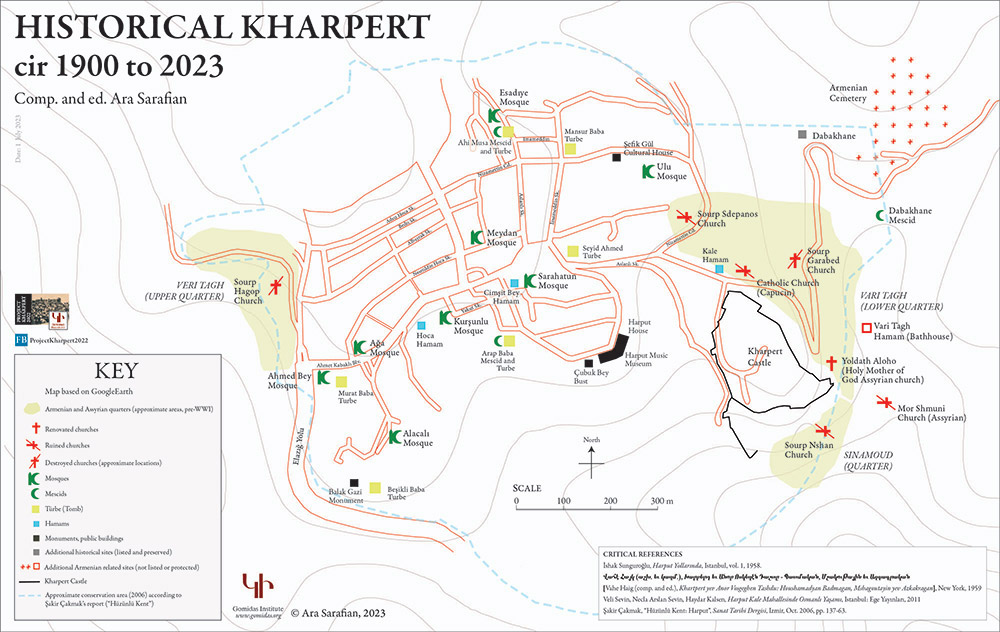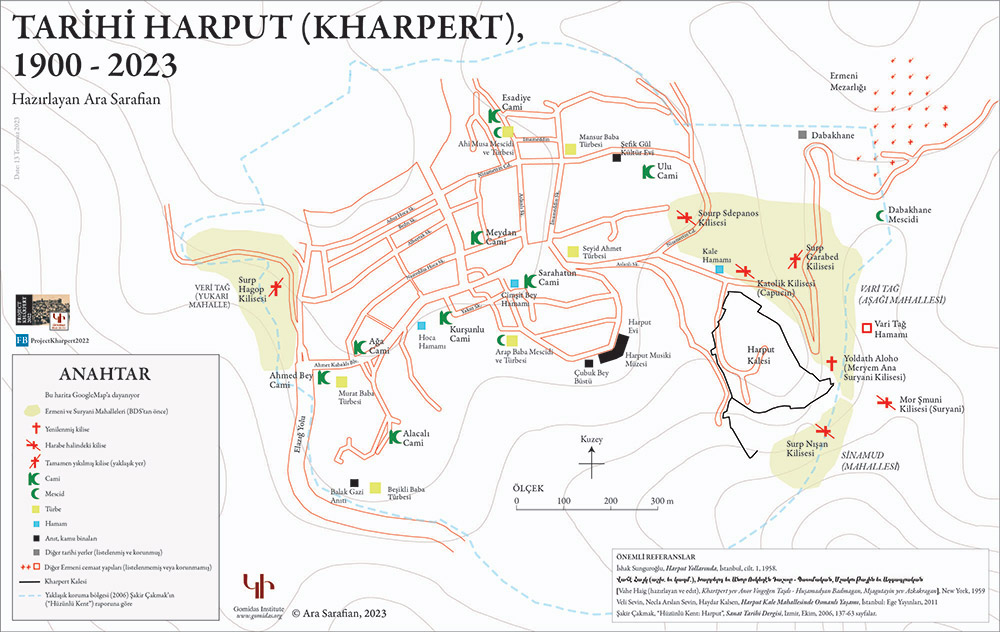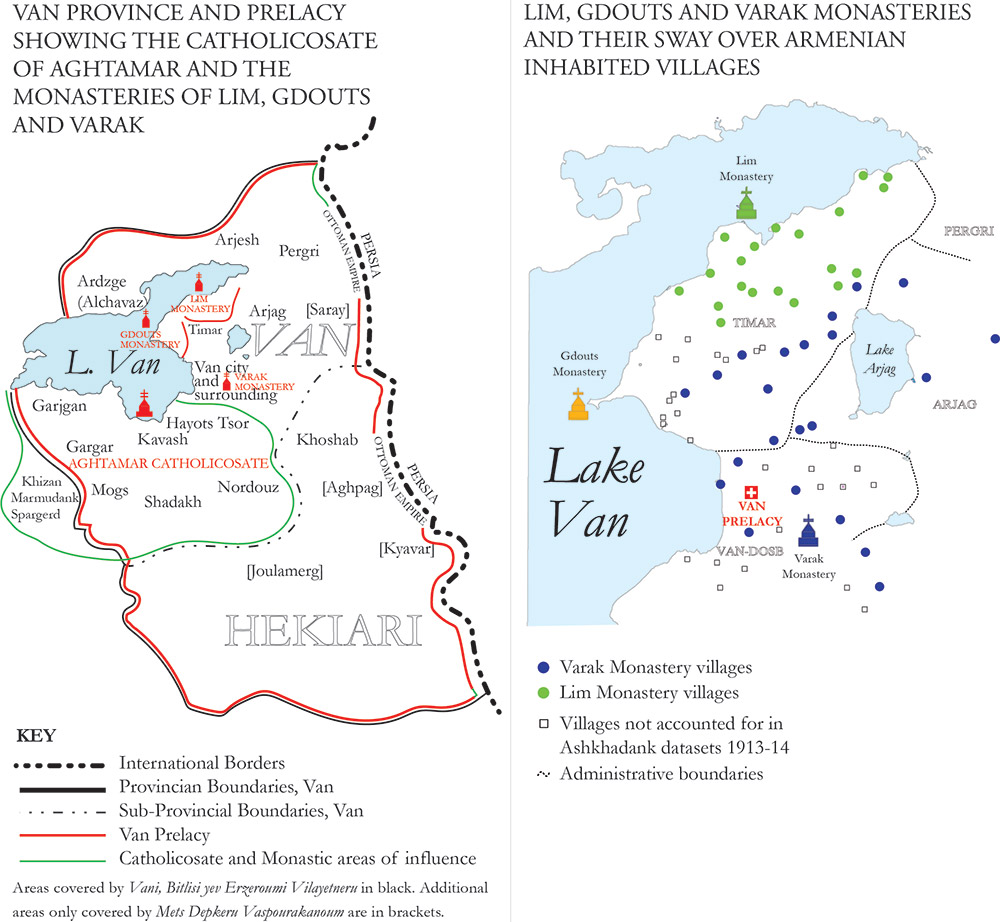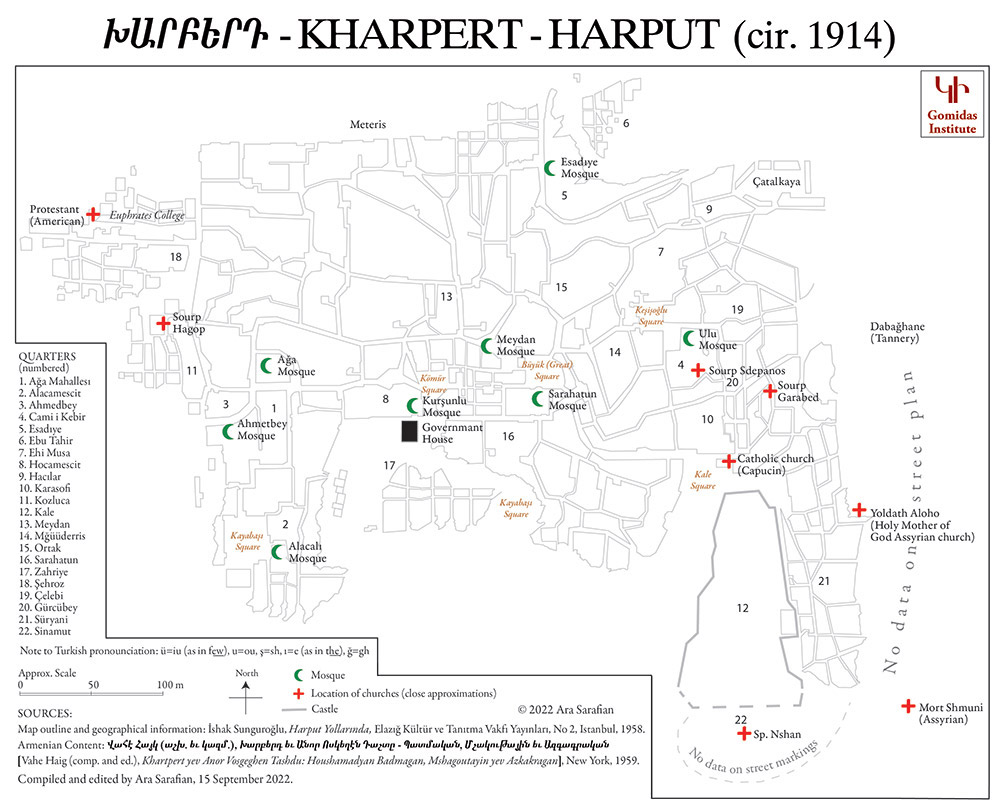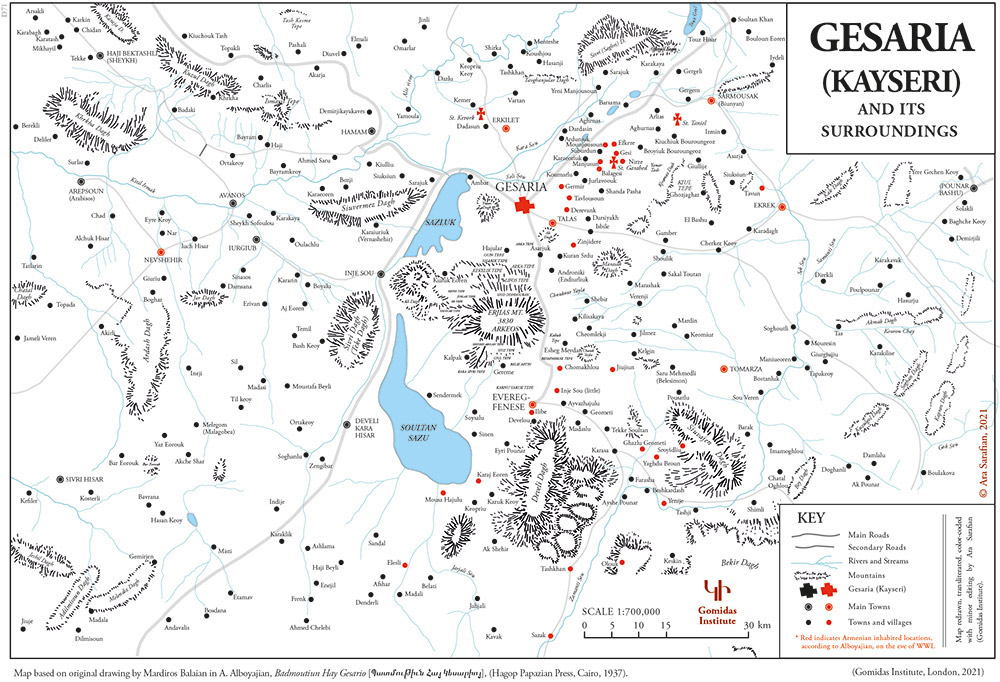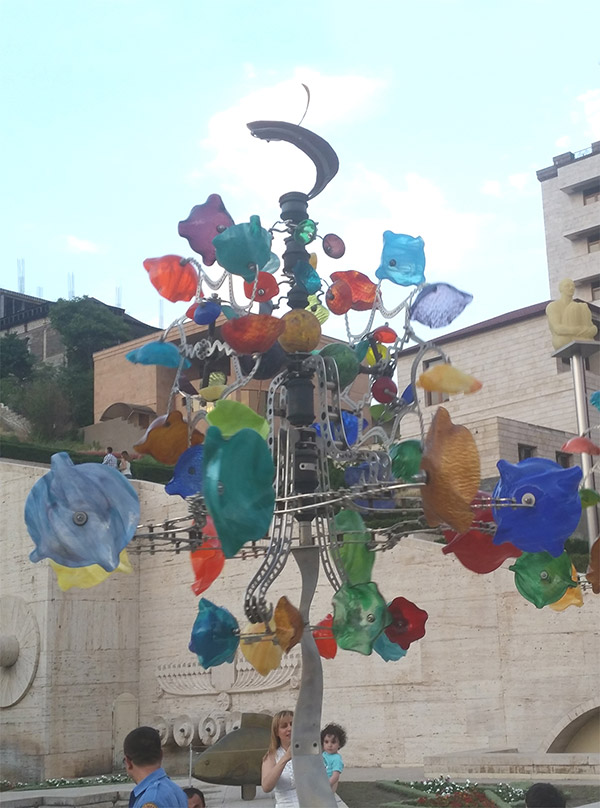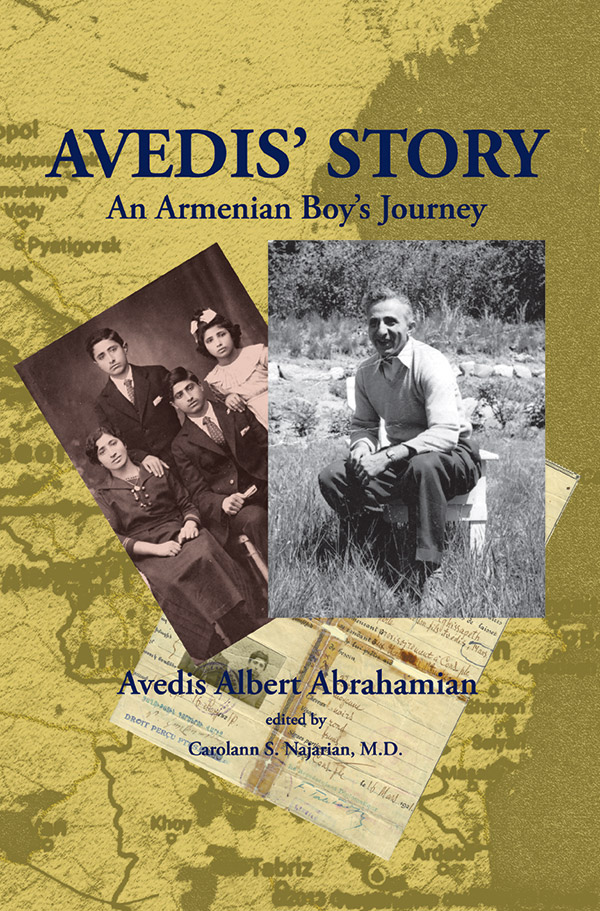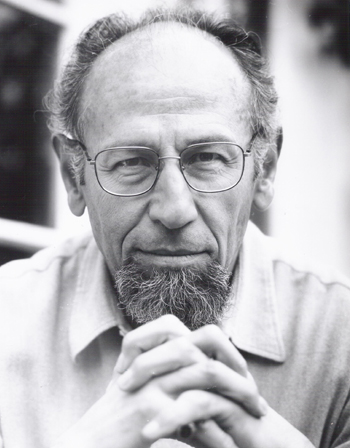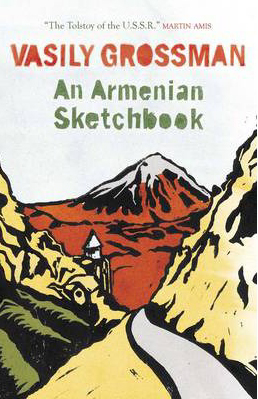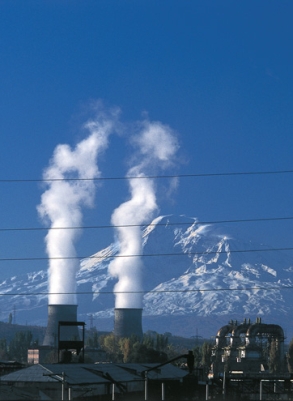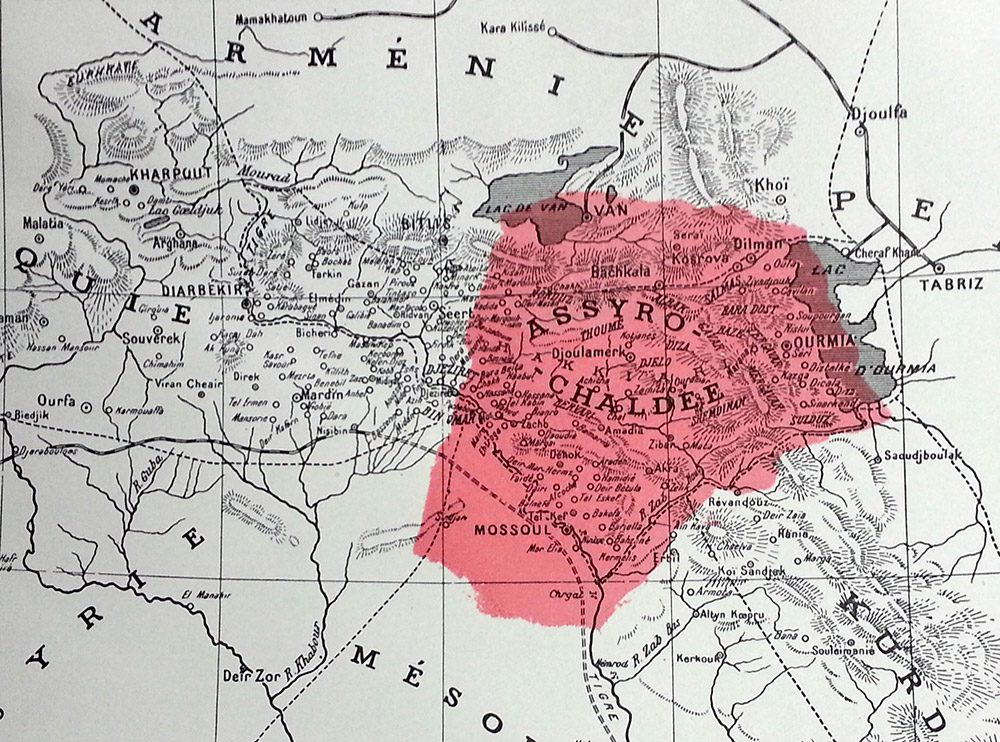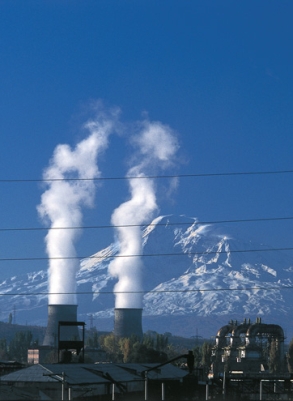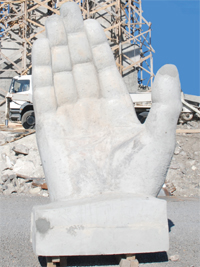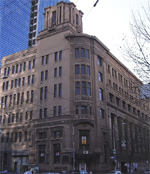Armenian Forum On-Line
About
Armenian Forum On-Line is a timely platform for scholarship related to modern Armenian studies. Submissions can be articles, reviews, notes and studies of academic interest. All submissions will be peer reviewed. Please send all materials electronically to the editor (afol@gomidas.org)
A-Do is a leading intermediary source on the Armenian population of Van cir. 1915. This is a critical evaluation of his work Mets Depkeru Vaspourakanoum in 1914-1915 (Yerevan: Louys, 1917]; English translation, Van 1915: The Great Events of Vasbouragan (London: Gomidas Institute, 2017).
This is a composite map of Kharpert (Խարբերդ) cir 1914. It is mainly based on the works of İshak Sunguroğlu, Harput Yollarında, (Elazığ Kültür ve Tanıtma Vakfı Yayınları, No 2, Istanbul, 1958) and Վահէ Հայկ (աշխ. եւ կազմ.), Խարբերդ եւ Անոր Ոսկեղէն Դաշտը - Պատմական, Մշակութային եւ Ազգագրական [Vahe Hayg (comp. and ed.), Khartpert yev Anor Vosgeghen Tashdu: Houshamadyan Badmagan, Mshagoutayin yev Azkakragan] (New York, 1959). The base map of the city is from Sunguroğlu.
This is an English rendition Mardiros Balaian's iconic map of the Gesaria [Kayseri] region circa 1915 in A. Alboyajian, Badmoutiun Hay Gesario [Պատմութիւն Հայ Կեսարիոյ], (Hagop Papazian Press, Cairo, 1937). Comp. and ed. by Ara Sarafian, 2022.
• Mischa Geracoulis is a writer and educator based in California. She writes on social justice and human rights, education, diaspora, migration, identity and the multifaceted human condition. She can be found at Twitter @MGeracoulis
Avedis' Story: An Armenian Boy’s Journey
(ed. C. S. Najarian), Gomidas Institute, London ISBN 978-1-909382-13-8,
pb. UK£16.00 / US$22.00.
Armenians in the Kharpert Plain cir. 1915, a detailed, full color, foldout map
(Gomidas Institute, 2015) UK£8.00 / US$12.00.
• Kubra Uygur is a PhD student in Ottoman & Byzantine and Modern Greek Studies (University of Birmingham)
18 March 2015
The following account was written by Diran Meghreblian in 1999. We are reprinting it with two additional sections added by the author.
* Diran Meghreblian was born in 1945 in Troy, New York,
USA. When he was four years old the family went to live to Soviet Armenia
where Diran received a Russian education at school and college level in
Yerevan. After the family emigrated to France in 1965, he continued his
studies at the Sorbonne University in Paris graduating in 1969. In 1970 Diran was invited to England to work at the BBC's World Service
as a Russian broadcaster. He took early retirement in 1999. In addition
to nearly 30 years' experience as a radio-journalist Diran has done
considerable voice-over work, both in Russian and in English. He has
also worked in cinema appearing in the 1999 James Bond movie "The World
Is Not Enough" and in a thriller called "Revelation."
10.1.2015
Grossman in Armenia
Discovering a Different Literary Caucasus in Vasily Grossman's An Armenian Sketchbook
* Lilit F. Grigoryan is a graduate student enrolled in the MA program in Russian Translation at Kent State University. She graduated from Yerevan State University in 2007 with a BA in Russian Philology.
Բնապահպանական շարժումը Խորհրդային Հայաստանում հիմք հանդիսացավ համազգային նոր շարժում սկսելու «գլաստնոստի» ժամանակաշրջանում: Չնայած Հայաստանում խորհրդային իշխանութեան փլուզման վերաբերեալ լայնածաւալ ուսումնասիրութիւններին՝ շատ քիչ ուսումնասիրութիւն է արուել այս շարժման՝ որպէս հայկական ազգային եւ քաղաքացիական դրսեւորման խոշոր գործօնի, թեմայով: Հայաստանի բնապահպան-ակտիվիստներ Կարինե Դանիելյանի և Հակոբ Սանասարյանի բացառիկ հարցազրույցների օգնությամբ այս աշխատանքն ուսումնասիրում է շարժման հիմքերը՝ սկսած 1970 թվականից՝ ներառյալ դրա էվոլյուցիոն զարգացումը «գլաստնոստի» ժամանակ և դրա հետագա խնդիրները:
28 June 2013
This project is based on an appendix to a report that was prepared by Agha Petros in 1922 for the Lausanne Peace Conference. This appendix lists around 1,000 Chaldeo-Assyrian communities in the Ottoman Empire and Iran before 1915.
19 May 2013
The environmental movement in Soviet Armenia served as a catalyst for the rise of the Armenian national movement during glasnost. Despite extensive studies of the collapse of Soviet power in Armenia, little research has looked at this movement as a major factor in Armenian civic and national expression. With the aid of exclusive interviews with leading Armenian environmental activists, Karine Danielyan and Hakob Sanasaryan, this study explores the roots of the movement starting from the 1970s to its evolution under glasnost and its continuing concerns.
24 April 2007
22 January 2008
Conventional accounts of the Armenian Genocide invariably start with the arrest of Armenian community intellectuals on 24 April 1915 followed by the unfolding of a genocidal process. The recent attempt by the former head of the Turkish State Archives Yusuf Sarinay to argue that nothing untoward happened to the men who were arrested on that date, especially the political prisoners sent to Ayash, was a clear attempt to falsify history argues historian Ara Sarafian.
